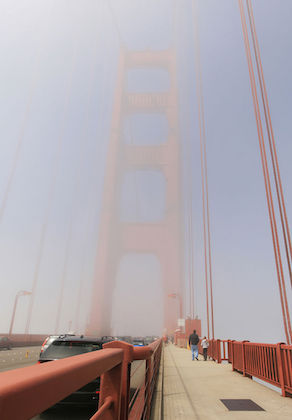430317-Nasty Fog 2.jpg

Fog in San Francisco on the Golden Gate Bridge. Credit: Wikipedia/public domain
A foggy California coastline is a staple of Hollywood mysteries and horror tales, enfolding everything from murderers to monsters. Today, the California fog is enfolding another hazard: a nasty form of mercury. There’s not enough of it to hurt people, but it may have effects on other life.
Researchers began studying the fog in 2011. They knew that, during the summer months, the level of mercury went up in Monterey Bay, near San Francisco. They wondered whether some of the mercury could make its way into the fog and drift ashore.
The first year of observations showed the answer was “yes.” They found high levels of a toxic form known as methyl mercury, which can cause health problems. So the scientists expanded their studies of the fog. Those studies are showing even higher levels of mercury. And related studies are showing high levels in some coastal animals as well.
Mercury enters the water through runoff, or from pollution from coal-fired power plants and other sources. Organisms in the water convert some of the mercury to a harmless form, which settles to the bottom.
During summer, currents bring water from the bottom to the surface. Some of the mercury in the water is carried into the air by the winds, where it can be incorporated into droplets of fog. Researchers say the fog can be acidic, transforming the harmless mercury to methyl mercury. The fog deposits the mercury as it drifts ashore. Over time, the mercury can build up in plants and animals — a scary menace from the fog.

